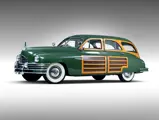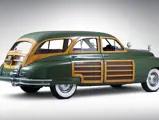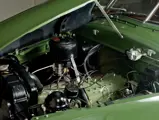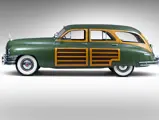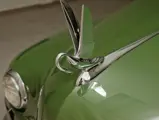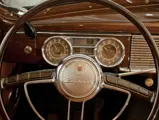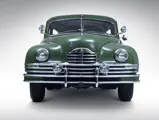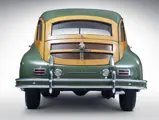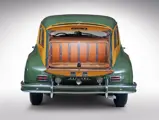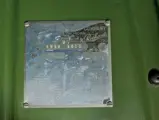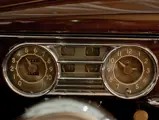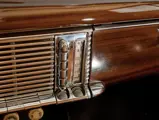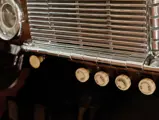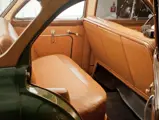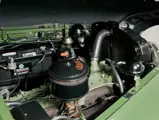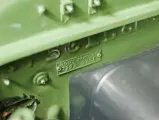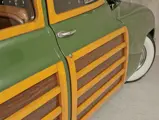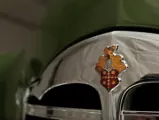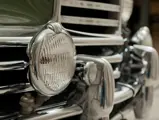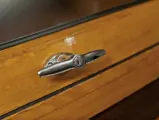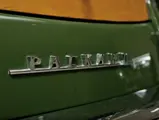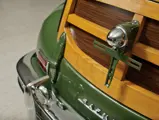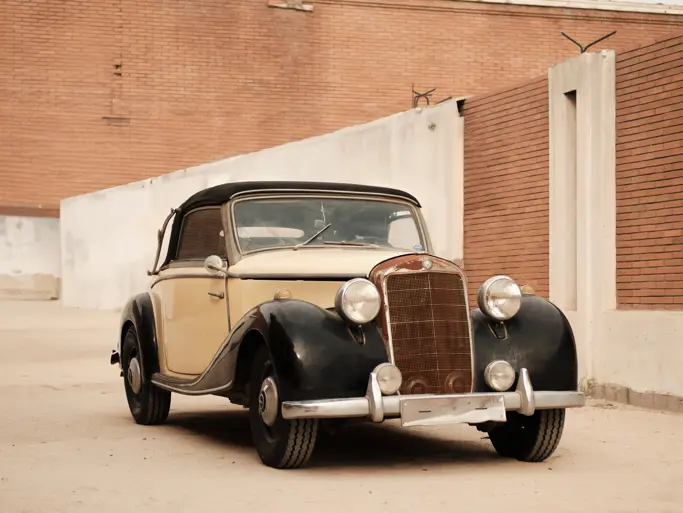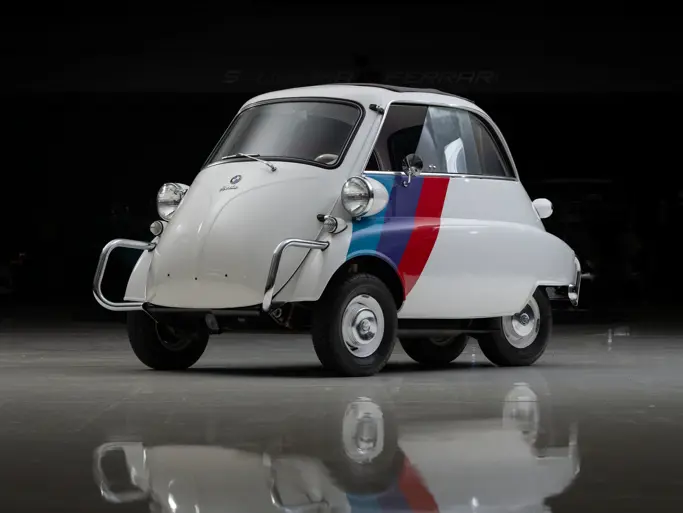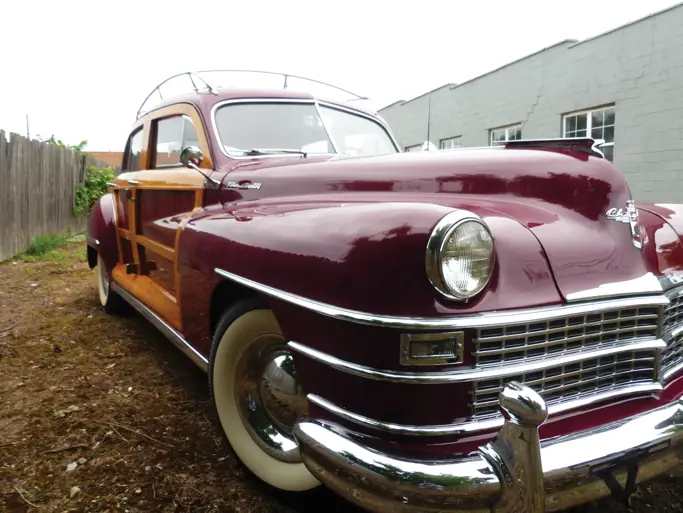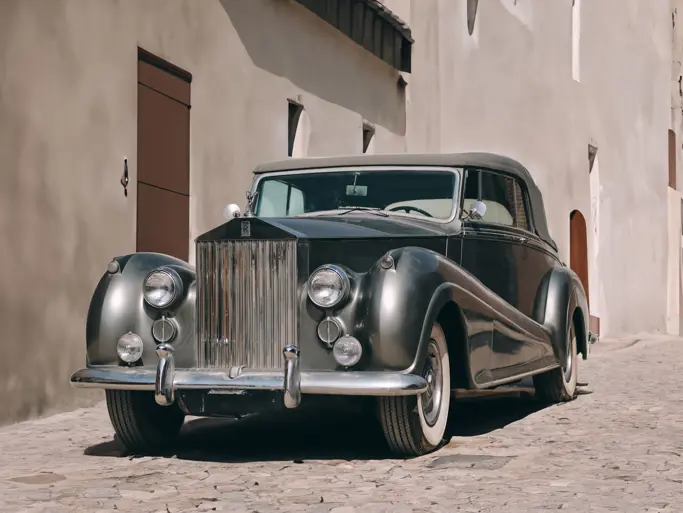St. John's 2012
1948 Packard Eight Station Sedan
{{lr.item.text}}
$51,700 USD | Sold
 | Plymouth, Michigan
| Plymouth, Michigan
{{internetCurrentBid}}
{{internetTimeLeft}}

Series 22. 130 bhp, 288 cu. in. L-head inline eight-cylinder engine, three-speed manual transmission with overdrive, independent coil spring front suspension, live rear axle with semi-elliptic leaf springs, and four-wheel hydraulic drum brakes. Wheelbase: 120"
• Elegant wood-bodied station sedan
• Well-preserved original car
• Offered from the Estate of John O’Quinn
Packard built wood-bodied station wagons prior to World War II in both the six-cylinder 115 and eight-cylinder One-Twenty variants. The new Clipper styling in 1941, however, was not compatible with timber construction; production of the Clipper resumed after the war, and wagons were no longer constructed. For 1948, though, Packard had its all-new twenty-second series ready, a wider and lower adaptation of the sleek Clipper lines. This did not allow for use of the perpendicular style wagons still being produced by the Big Three. Instead, Packard pointed the way to the hybrid wagon later to be embraced by Ford: a steel substructure augmented by wood frames and panels on the doors and upper body.
Rather than design a whole new body structure, as Ford and GM would do, Packard took the basic sedan and added a “dormer” at the back, which preserved the general lines but provided slightly less interior room than the competitors’ vehicles did. The Packard Station Sedan thus became part of the lowest-priced Standard Eight series for 1948. Priced at $3,425, it was the most expensive of the short-wheelbase Packards, even the Super Eight models. Production reached fewer than 3,900 in just over two years, most of them built in 1948. A few were carried over into the twenty-third series as 1950 models.
Previously in the collection of the Auburn Cord Duesenberg Museum, this 1948 Packard Station Sedan is a very nice, original vehicle. Painted Packard’s Golden Green, it has retained the original, practical, tan vinyl interior. Although showing its age, the exterior wood has been carefully maintained and is highly varnished. Equipped with a radio and heater for passenger entertainment and comfort and twin backup lights for convenience, this Packard is the most dramatic model of the twenty-second series. Rare and beautiful, it is the ideal car to round out a collection of original Packards.

